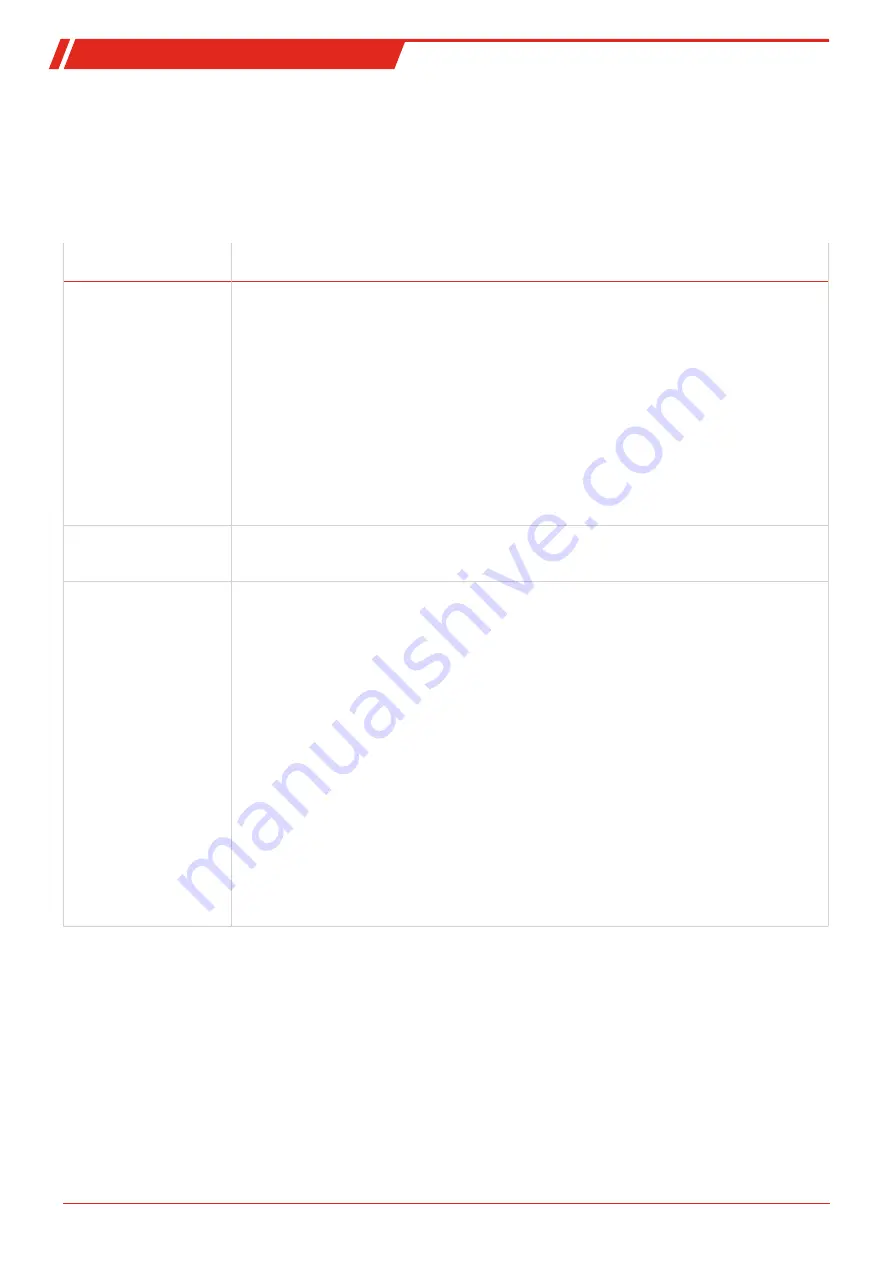
BCM-MS, BCM-LS
4.5 Application Example
The oil condition is a factor formed from various parameters. Limits for specific oil parameters vary by the respective applica-
tion, e.g. the components and materials used. The type and speed of oil parameter change in turn varies by application, specific
system load and the fluid medium or lubricant used.
Universal limits therefore cannot be defined for individual parameters. The following shows some example characteristics of
condition changes for fluid media or lubricants. The values specified are merely guidelines. Adjusting the standard values spe-
cifically for the system requires laboratory analyses.
Condition/condition
change
Criterion
1. Oil refreshing/change
The sensor characteristics changing quickly is typical for refreshing small amounts of oil refreshing.
Depending on the temperature, media viscosity, flow conditions and mixing in the system, oil be-
ing refilled can already be detected within a few hours. The same applies to oil being changed.
If the sensor is running during the oil change, the oil change can already be detected when the oil is
drained and the measurement temporarily dropping to the respective air value. Whether oil re-
freshing can be detected greatly depends on the amount of oil refilled, the difference in oil charac-
teristics and the sensor resolution.
Relative permittivity (DK):
When refilling with a higher or lower relative DK - compared to the medium currently in the system
- the value rises or drops after homogeneous mixing. This change in condition arises when refilling
with a different type of oil or if the oil in the system has already changed due to aging. Adding the
exact same relative DK as the oil in the system cannot be detected from this parameter. However,
oil refreshing can be detected through other parameters described below.
2. Using the correct oil
Whether the prescribed lubricants is used can be determined by the conductivity and the relative
DK. The respective parameters must be stored in the system for fresh oil. The theoretical and actual
values can then be compared.
3. Oil aging
Oxidative aging of fluid media or lubricants typically produces polar aging products. It typically
produces aldehydes and ketones and subsequently acidic and higher-molecular aging products.
Analysis laboratories often use the acid number TAN as the characteristic marker for determining
free acid in the oil. Since oils already have different acid numbers when fresh, the TAN trend is typ-
ically monitored. A change in the TAN by 2 mg KOH/g, for example in hydraulic fluids, is considered
an indicator for an oil change.
Relative permittivity (DK):
The sensor can track a rise in polar oil components using the relative DK. As with monitoring the
TAN, the trend and less so the absolute parameter are key. Oxidation typically causes a rise in the
relative DK. The change is typically slow. If the relative DK has changed over 10 to 20 % from the
fresh oil value, the oil should be further analysed. Closer analysis is also advisable if the speed at
which the signal changes increases considerably and a progressive signal sequence can be detected.
Conductivity:
The conductivity and the relative DK change in the aging process. In many cases the number of
charge carriers in the oil increases and the conductivity increases.
The sensor saves the fresh oil values for conductivity and relative DK. Oil aging can then be detected
e.g. by comparing fresh oil values and current characteristics. The sensor automatically performs
this analysis and deduces the so-called aging progress (AP) from this.
37
Bühler Technologies GmbH
BE150104 ◦ 03/2021















































